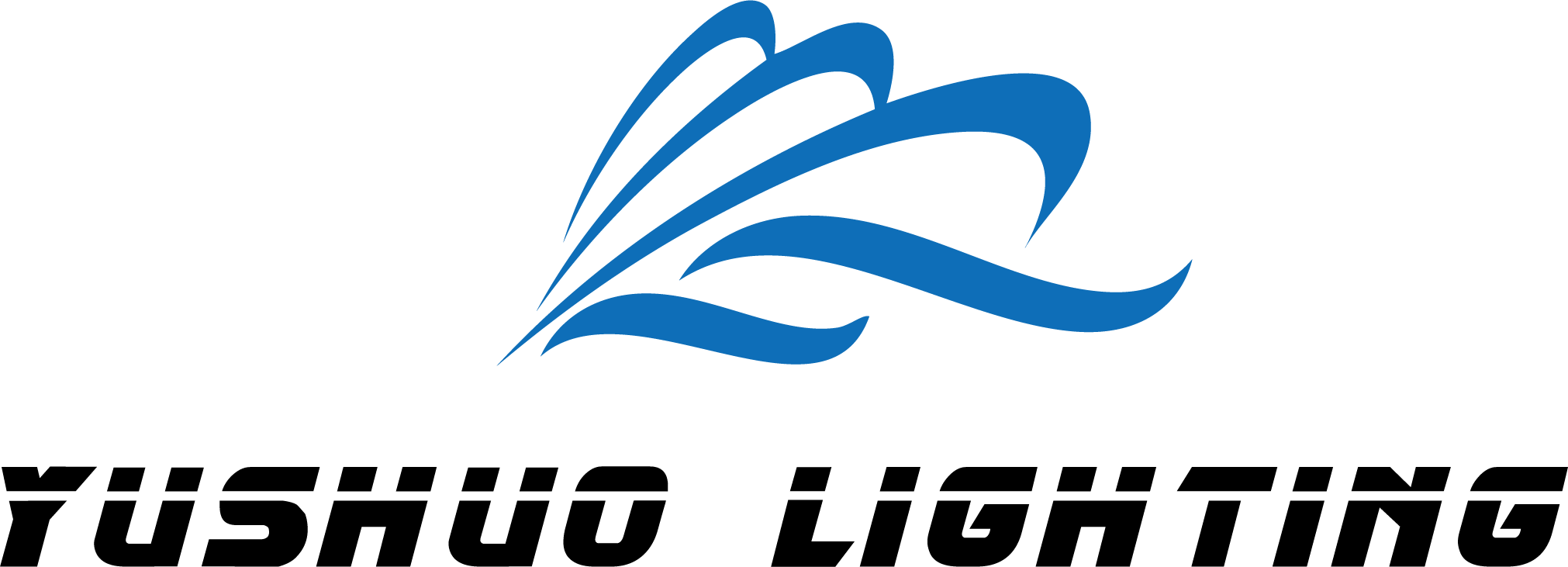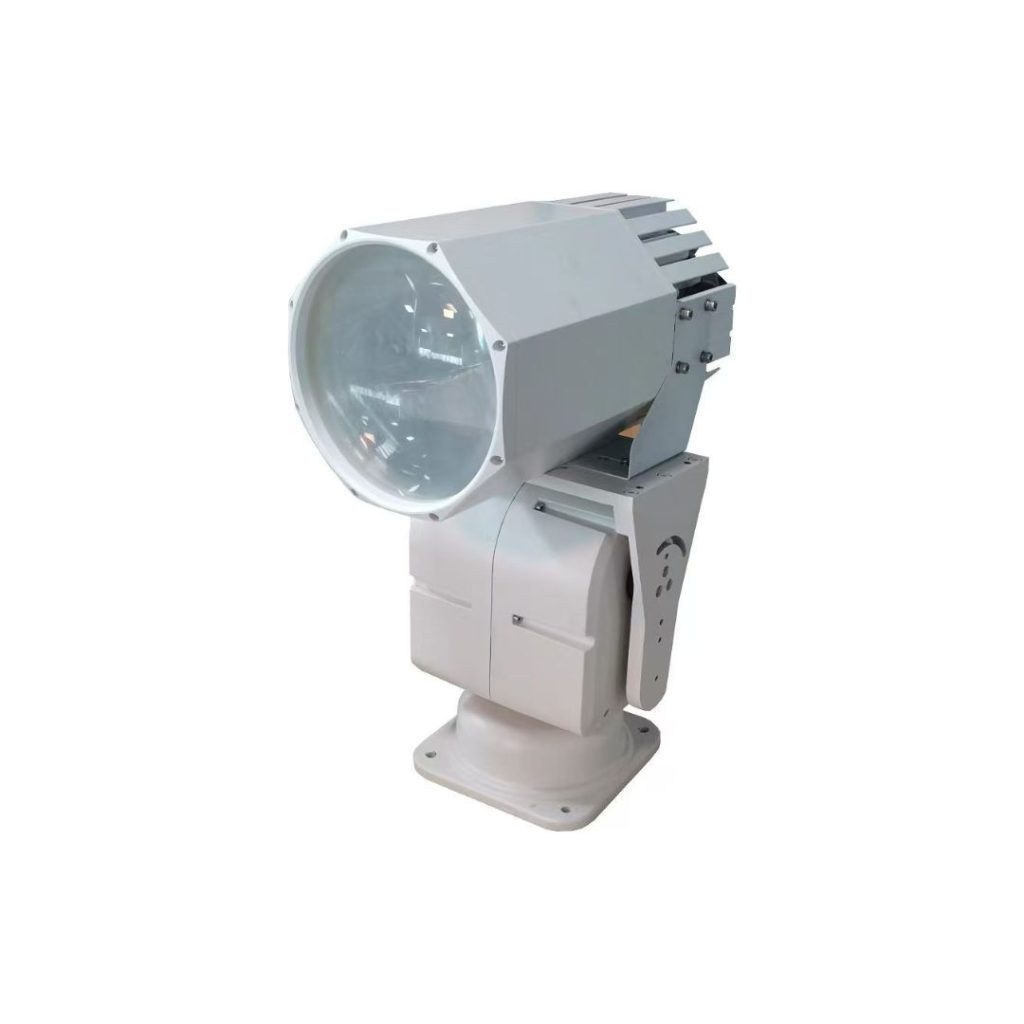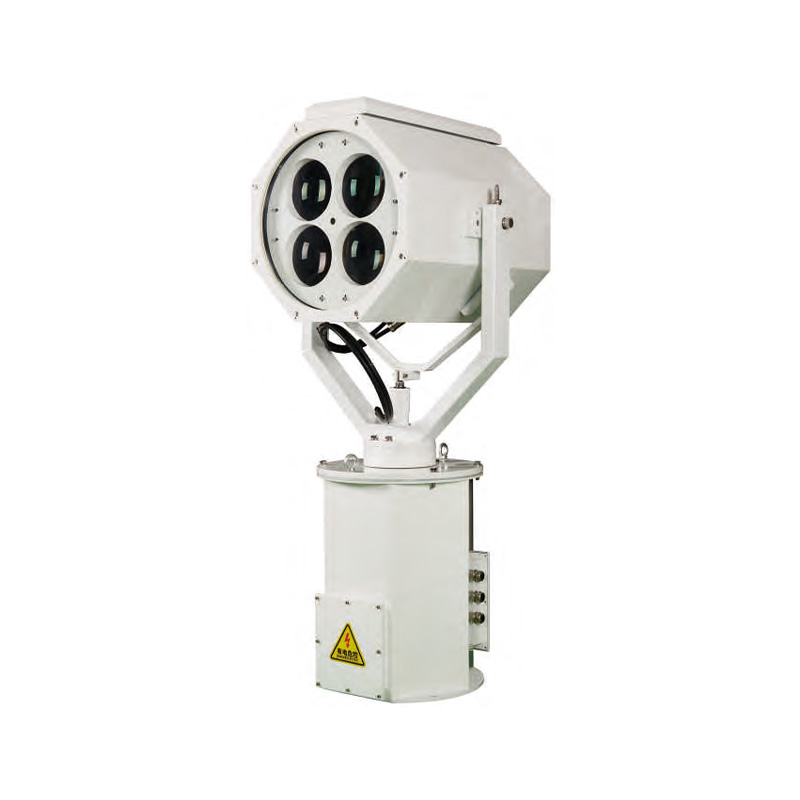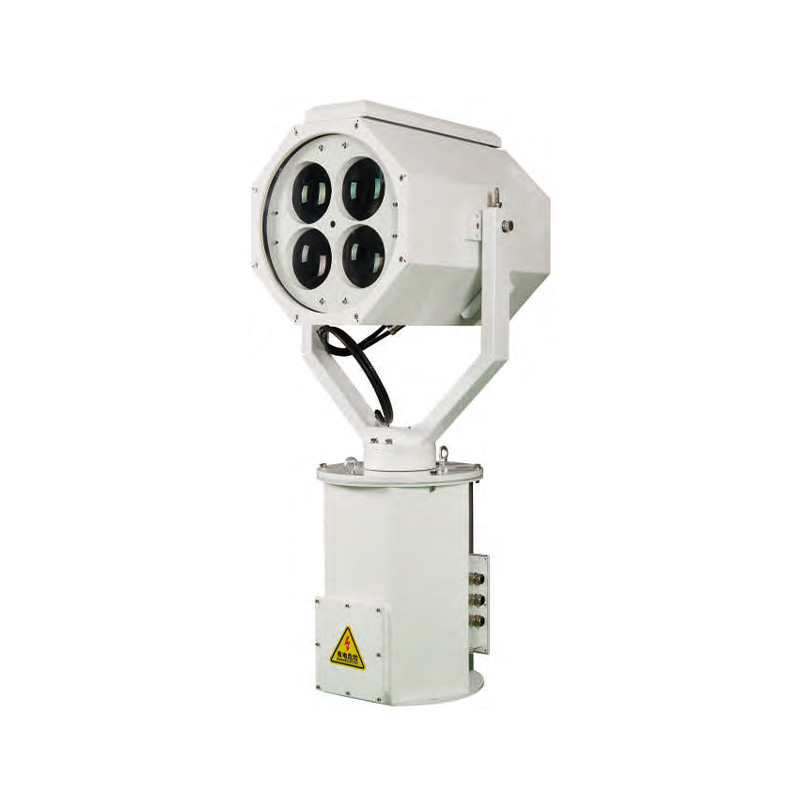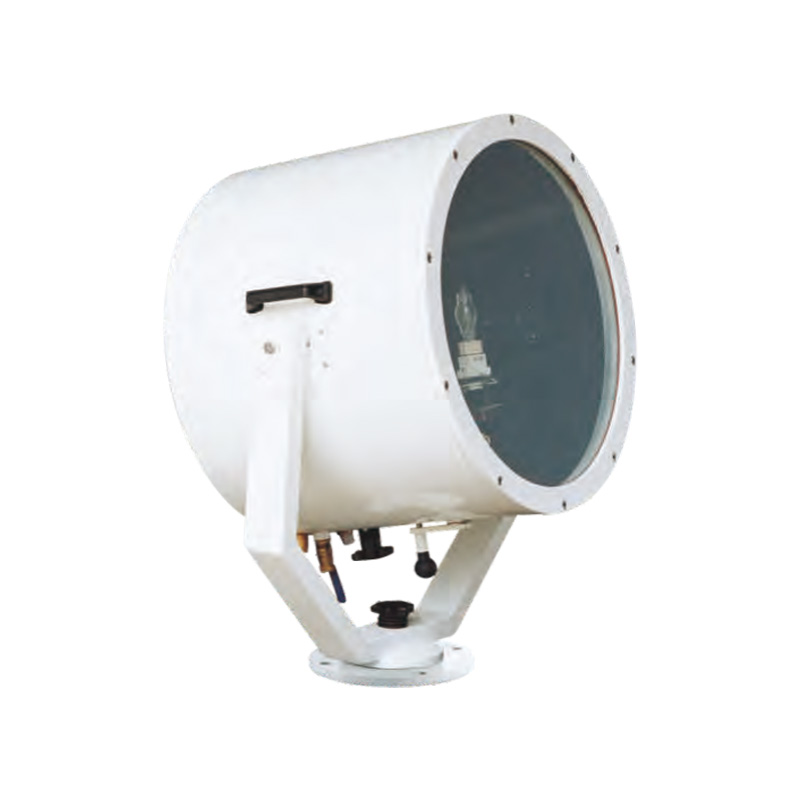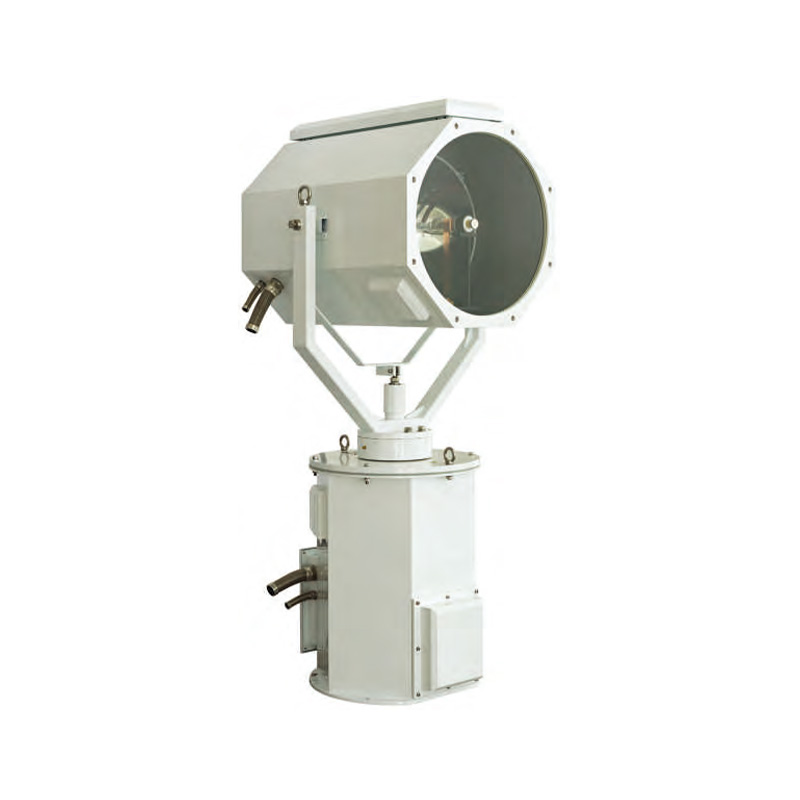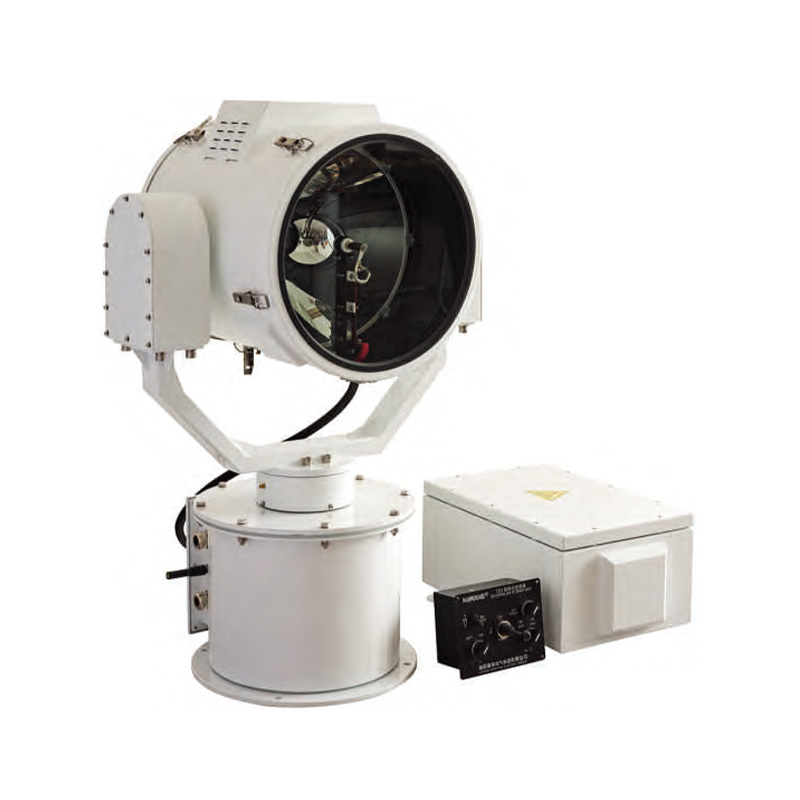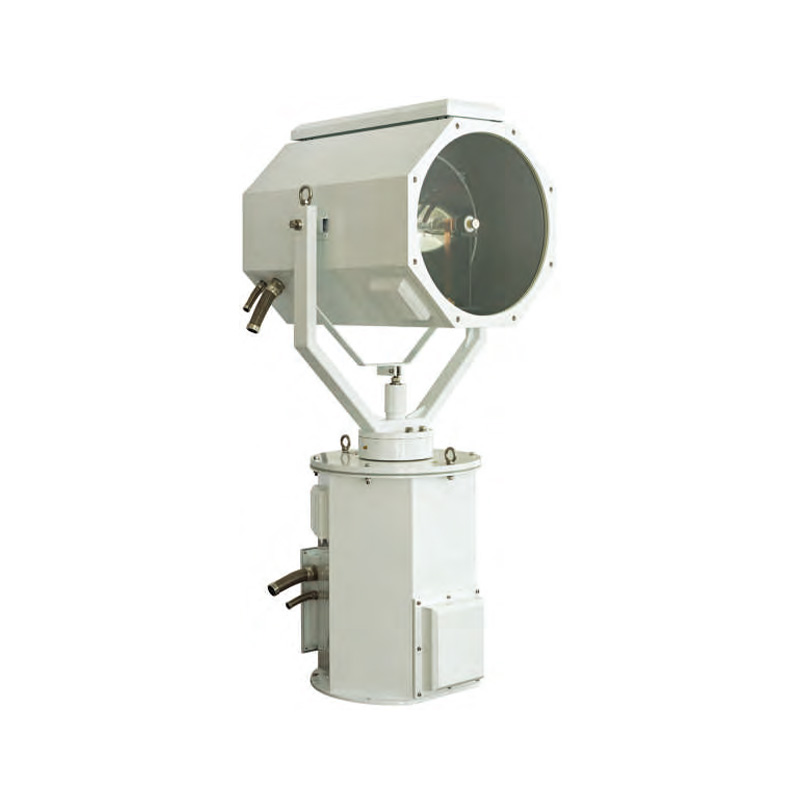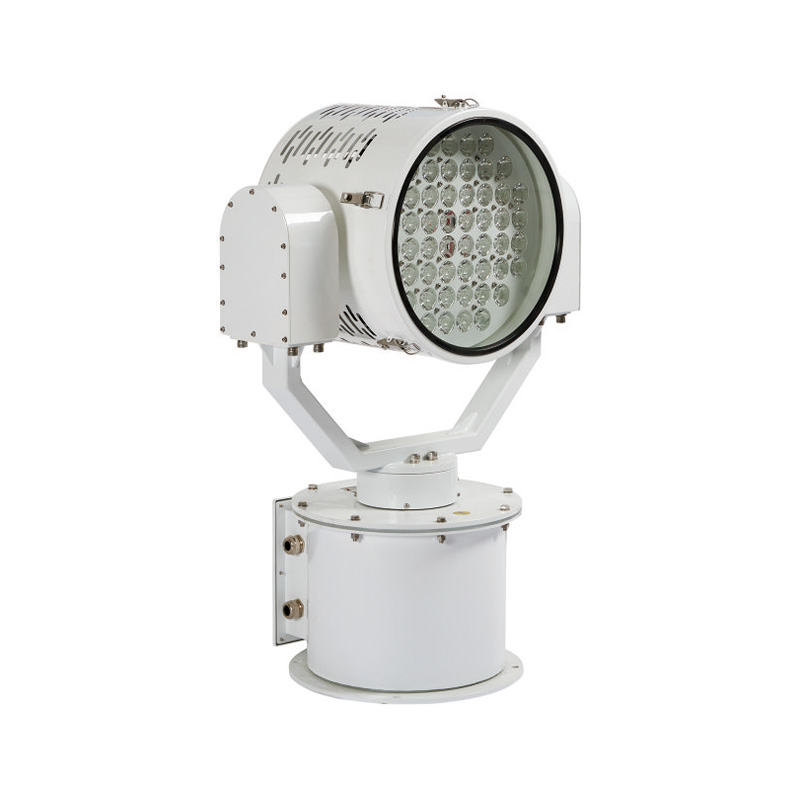What is The Marine Searchlight Principle
A marine searchlight is an essential device for safe navigation at night. This device produces a directional light which is reflected and focused to give the crew a clear view to aid the identification of obstacles and navigational landmarks. The use of carbon arc lamps in searchlights in 1870 marked the beginning of this technology. Nowadays marine searchlights use more advanced light sources like halogen tungsten lamps, ultra high pressure mercury lamps, metal halide lamps, xenon lamps and LED lamps. In addition to navigation, these lights are used for signaling and in other areas. In this article, I will explain at length the principle of marine searchlight in order to understand the technology of such a navigational device in detail.
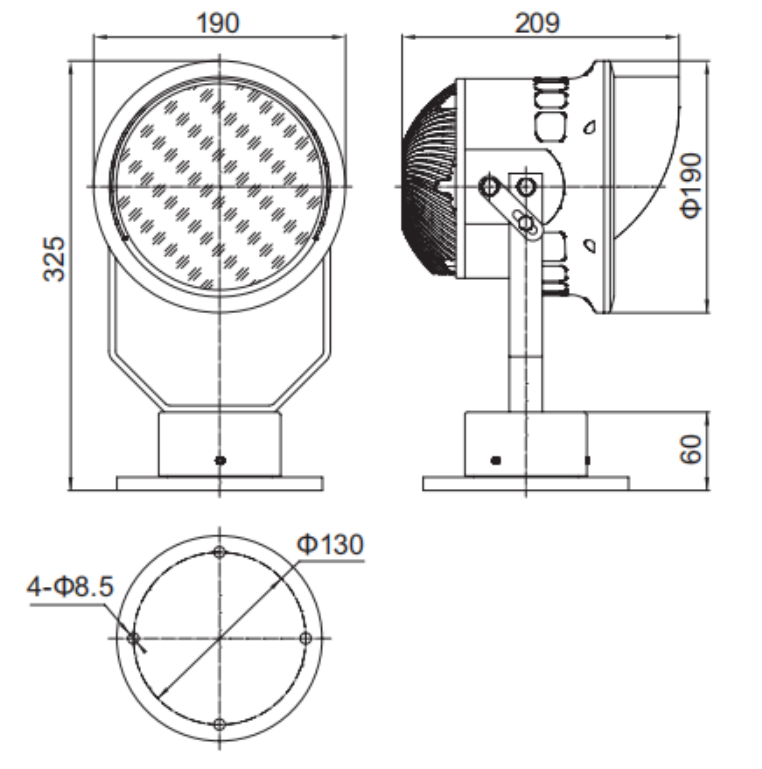
Table of Contents
Composition of Marine Searchlight
To appreciate how a marine searchlight works, one needs to appreciate the particular parts constituting a searchlight. These parts enable creation, guidance, control, and production of the light beam to ensure the best performance on the sea.
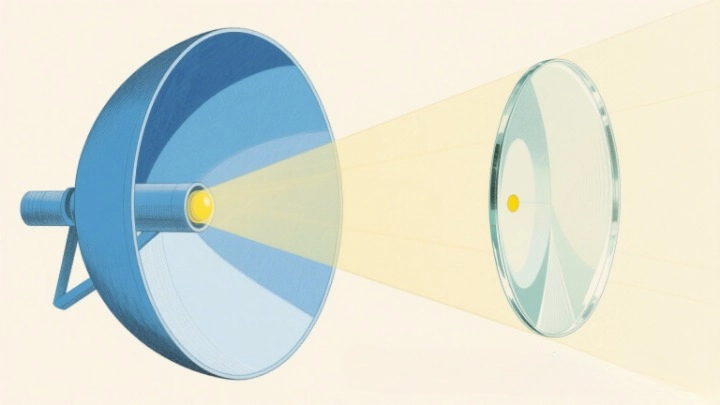
Reflectors and Lens Systems
Marine searchlight applies optical elements to aim light in a particular direction and even focus it. Core components include reflectors and lenses. Reflectors, which are mainly parabolic and ellipsoidal, concentrate light to a powerful beam. Lenses further enable the beam to be directed toward the intended target with the required angles.
The Role of a Reflector
A reflector is a key optical component in a marine searchlight. A marine searchlight applies lenses, the key optical elements in the equipment, to alter and aim the intended light in the proper direction. A lens is a diving glass which is intended and meant to center a vessel toward a particular focus to accentuate beam of light. A parabola or ellipsoid reflector shape is used to provide the lens. The focused amplified beam can also be efficiently geared to enable motion, thanks to beam enhancing lenses. Thus, by enhancing lenses and additional lenses, the focused amplified beam can also be efficiently geared to enable motion.

Functions of a Lens
Lens manage how light is focused and spread through a light beam by employing refraction principles. Lenses have two categories: Concave and Convex. Convex lenses focus light into a single point, thus concentrating it, whilst the concave lenses diverge the light so it covers a larger area. Various lens types can be combined so that the light beam is shaped and sized as the scenarios require.
Light Bulbs and Light Source Technology
When it comes to marine searchlights, the choice of light source is critical for achieving optimal performance and reliability.
| Light Source Type | Working Principle | Advantages | Disadvantages | Applications |
| Halogen Tungsten Lamps | Heating a tungsten filament to produce bright white light, with halogen gas extending filament life | High brightness, instant-on capability, excellent color rendering | Lower energy efficiency | Situations requiring immediate high-intensity illumination |
| Ultra-High-Pressure Mercury Lamps | Electric current through mercury vapor generates UV light, converted to visible light by phosphor coating | High luminous efficacy, long life, high brightness | Warm-up period required, contains mercury | Applications needing wide beam spread and high visibility |
| Metal Halide Lamps | Electric arc through a mixture of metal halides and mercury vapor produces high-intensity light | High efficiency, excellent color rendering, long life | Warm-up period required, contains small amounts of mercury | Situations requiring high visibility and accurate color representation |
| Xenon Lamps | Electric current through xenon gas produces bright white light with excellent color rendering properties | Exceptional brightness, instant-on capability, long operational life | Higher cost, may require complex power supplies | Applications needing high intensity and wide beam spread |
| LEDs | Electroluminescence: electrons recombine with holes in semiconductor material to release photons | High efficiency, long life, resistance to shock and vibration, instant-on capability | Higher initial cost | Various maritime applications |
The choice of light source for a marine searchlight depends on specific requirements such as brightness, energy efficiency, color rendering, and service life. When selecting a marine searchlight light source, the specific needs of the vessel and operating environment must be considered to ensure optimal performance and safety.
The Marine Searchlight Principle
The explanation of marine searchlights operation involves in-depth and systematic activities and processes which, when well combined, ensure that effective illumination is done within the required distances expected in a marine environment.
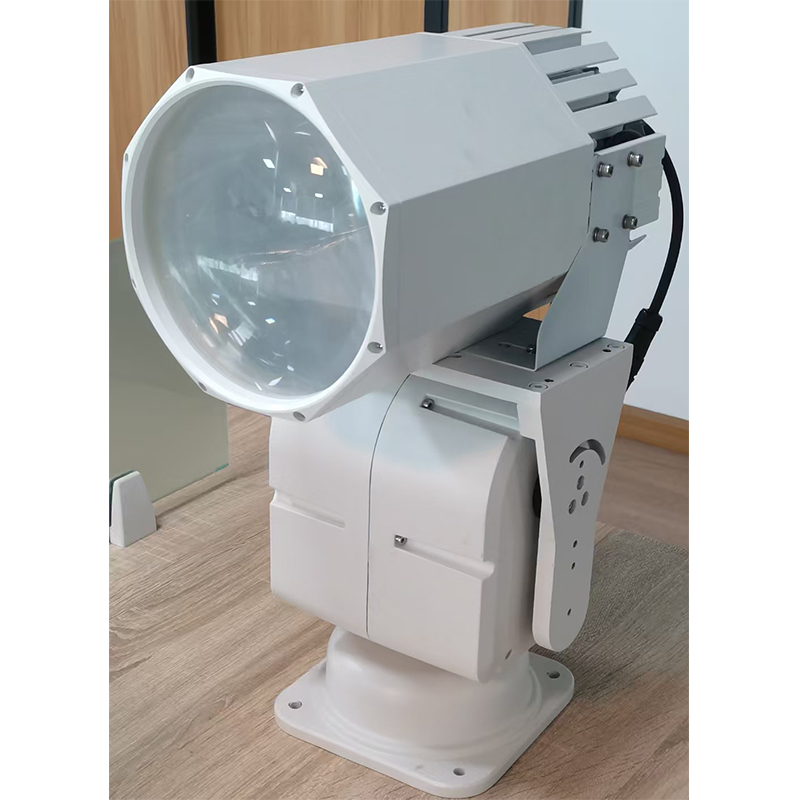
Light Generation
The operation of a marine searchlight begins with the generation of light. This can be accomplished in several ways, but here, we discuss a few with notable benefits:
Incandescent Filament: In older marine searchlights, incandescent bulbs with tungsten filament are used. When electric current is passed through the filament, the filament glows and emits light. This is a very straightforward and dependable search light’s light generation method, though in some cases, it may be less effective than modern alternatives.
Gas Discharge: More modern marine searchlights are equipped with gas discharge lamps, with xenon lamps being the most popular. In these lamps, xenon gas atoms are excited, and an electric current passing through a gas-filled tube will light them. Xenon lamps have excellent long distance illumination and are popular due to their high intensity and excellent color rendering.
Light Emitting Diodes: Today’s marine searchlights make use of LED technology, as it is more modern and sophisticated. LEDs, which stand for Light Emitting Diodes, are semiconductor devices that emit light during the passing of an electric current. Using LEDs marine searchlights have distinct advantages such as, long life, and ease in modulation during illumination. LED marine searchlights have a wide range of color, and they are easily controlled.
Reflection and Directions:
In order to transform light into a focused beam, some form of direction needs to be applied, and this is where the reflector comes in . The reflector is of critical importance.
Reflector Design: The reflector is usually of a parabolic or elliptical form which serves the purpose of capturing the light given by the source and directing it to where it is needed. The reflective coating of the surface is usually aluminum or silver to make the reflector as light efficient as possible.
Focusing Mechanism: The reflector is able to focus the light into a narrow beam, which is critical for long distance viewing. The form and size of the reflector determines the intensity and the width of the beam. In as much as a larger reflector is able to capture a lot of light and assist in the creation of a brighter and better focus beam, it makes search light larger and heavier.
Refraction and Control
After the light is directed by the reflector, it passes through a lens system. The lens system is responsible for refining the beam and controlling its characteristics:
Lens Function: The lens can adjust the shape of the beam, making it narrower or wider depending on the desired coverage area. It can also correct any aberrations in the light, ensuring that the beam is as uniform and intense as possible.
Intensity Control: The lens system may include adjustable components that allow the operator to control the intensity of the light. This can be useful in different weather conditions or when targeting objects at varying distances. For example, a brighter beam may be needed for long-range detection, while a lower intensity may be sufficient for closer inspection.
Beam Spread: The lens can also control the spread of the beam. A wide beam is useful for general area illumination, while a narrow beam is better for pinpointing specific targets. Modern marine searchlights often have adjustable lenses that allow the operator to switch between different beam spreads as needed.
Projection
The final step is the projection of the controlled beam outward to illuminate the target area:
Target Illumination: The focused and refined beam is projected outwards, traveling through the air and illuminating the target area. The intensity and reach of the beam depend on the power of the light source, the efficiency of the reflector and lens system, and the atmospheric conditions.
Atmospheric Effects: The performance of the searchlight can be affected by atmospheric conditions such as fog, rain, or haze. These conditions can scatter or absorb the light, reducing its effective range and intensity. Marine searchlights are often designed to operate in various weather conditions, but their performance may still be limited in extreme situations.
Beam Stability: To ensure accurate targeting, the searchlight must be mounted on a stable platform. Modern marine searchlights often include stabilization systems that compensate for the movement of the ship, ensuring that the beam remains steady and accurately aimed at the target.
Additional Features
Modern marine searchlights may also include several additional features to enhance their performance and usability:
Remote Control: Many marine searchlights can be operated remotely, allowing the operator to control the direction, intensity, and beam spread from a control station inside the ship. This can be particularly useful in rough seas or when the operator needs to multitask.
Automatic Tracking: Some advanced searchlights are equipped with automatic tracking systems that can follow moving targets. These systems use sensors and algorithms to detect and track objects in the illuminated area, providing continuous illumination and reducing the need for manual adjustment.
Integration with Navigation Systems: Marine searchlights can be integrated with the ship’s navigation and communication systems. For example, they can be linked to radar or sonar systems to provide visual confirmation of detected targets. They can also be used in conjunction with communication systems to signal other vessels or provide visual cues in emergencies.
Conclusion
In summary, the working principle of marine searchlights involves a combination of light generation, reflection, refraction, and projection, with each step carefully designed to ensure effective and efficient illumination in marine environments. Modern advancements in technology have further enhanced the capabilities of marine searchlights, making them more versatile and reliable tools for navigation, search and rescue, and maritime security operations.
